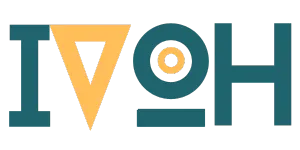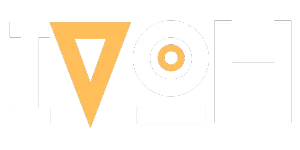Authors and publishers regularly discuss the benefits of print books versus ebooks. Each format has its advantages, so deciding which works best requires examining their differences.
Today we’ll look at how these publishing options distribute works and appeal to different readers. Comparing formats will help you determine the best way to share your writing with the world.

Everything You Need to Know About An eBook

An eBook, a digital work for screens, holds certain boons for souls. It brings flexibility – one device suffices for many tales! Therein lies ease for travelers faring here and yonder ways.
For nomads, this sure proves balm, no tomes in baggage stowed. And those with quarters scant find solace too – no shelves need load!
Libraries and sellers digital oft hold riches beyond the count, of stories spanning seasons long. And pricing there proves kind to spirits on purses lean and tight. Subscriptions grant halls of tales where hearts may read and delight!
Yet printed works remain cherished by hands that flip kind pages. For moments glancing, absorbed in tales that lift the soul and age.
Key Features of A Print Book

While e-books offer portability and large digital libraries, printed books retain enthusiastic supporters for both practical and emotional reasons.
Many readers appreciate print books as physical objects. Holding and turning pages allows a tactile reading experience free from screen time. Print also remains the preferred format for sharing with others and displaying on one’s bookshelf.
From an aesthetic perspective, printed books can be artwork in their own right. Beautiful covers and high-quality bindings appeal to those who view books as collectible objects. Readers enjoy the permanence and sometimes historical value of traditional printed text.
The used book market exclusively serves print lovers. Being less expensive than new editions, pre-owned volumes appeal both financially and through any annotations or markings from prior readers.
The Pros and Cons
eBooks
- Accessibility: eBooks can be downloaded and read instantly from anywhere in the world, provided there is internet access. This instant access is invaluable for students and professionals who need information immediately or for readers who cannot wait for physical delivery.
- Convenience: With eBooks, readers can carry hundreds of books on a single device, making it ideal for travel. This eliminates the need for physical storage and allows for reading during situations where carrying multiple books would be impractical.
- Cost-effective: Generally, eBooks are cheaper to produce and buy than their print counterparts. The lack of printing, shipping, and warehousing costs makes these more affordable, allowing publishers to price them lower.
- Interactive elements: eBooks can include links, videos, and other multimedia content, enhancing the reading experience. This is particularly beneficial in educational contexts where interactive elements can facilitate learning and engagement.
- Adjustable features: Readers can adjust the font size, background color, and brightness, making reading more comfortable for those with vision impairments. These customization options help cater to individual reading preferences and conditions.
- Dependency on devices: eBooks require electronic devices and power to be read. This dependency means that in the absence of electricity or functioning devices, reading an eBook can become impossible.
- Screen fatigue: Prolonged screen exposure can lead to eye strain and discomfort. Many people find that reading from a screen for long periods is less comfortable than reading from a paper book.
- Less memorable: Studies suggest that reading print leads to better retention of information than reading on a screen. The tactile act of turning pages and physically interacting with the book contributes to better memory and recall.
Print books
- Sensory experience: Many readers cherish the tactile sensations of holding a book and turning its pages. The physical interaction with a book can enhance the reading experience, making it more personal and engaging.
- No batteries required: Print books do not require power sources, making them always accessible. This independence from technology is particularly valuable during power outages or while traveling to remote locations.
- Easier on the eyes: Reading print is less likely to cause eye strain compared to screens. The matte surface of paper reflects light differently than screens, reducing glare and facilitating longer reading sessions without discomfort.
- Collectability: Print books can be collected and displayed in a library, often increasing in value over time. Many book lovers appreciate the aesthetic of shelves filled with books, which can also serve as personal or professional statements.
- Higher costs: Print books are more expensive to produce, resulting in higher retail prices. The costs associated with printing, distributing, and storing physical books add significantly to their final price.
- Environmental impact: Printing books consumes paper and ink, contributing to environmental degradation. The production process also involves the use of chemicals and generates waste, making it less sustainable than digital options.
- Bulk and weight: Carrying multiple print books can be inconvenient, especially for travelers. The physical bulk and weight of books can make them cumbersome to handle and transport, particularly for those who wish to read several titles simultaneously.
How to Make the Right Choice?

Consider Your Audience
Your decision should largely depend on your target audience. Younger, more tech-savvy audiences might prefer eBooks, while older demographics or collectors might lean towards print. Understanding the preferences and reading habits of your intended readers is crucial in choosing the right format.
Analyze Your Content
Some content is better suited to digital format, such as educational material that can benefit from interactive features. Conversely, narrative-driven books might be more enjoyable in print, where the traditional reading experience is often preferred.
Evaluate Your Budget
Consider your budget constraints. eBooks might be a more cost-effective option if you are starting out or have limited resources. The lower upfront costs associated with digital publishing can be particularly appealing to new authors and small publishers.
All in All
Deciding whether to publish your work as an eBook or a print book boils down to understanding your own goals and knowing your audience. If you’re just starting out and have a tight budget, eBooks can be a great way to reach readers without a hefty upfront investment. They’re especially good if you want to tap into a global market right away.
On the other hand, if your dream has always been to see your book on a shelf or you’re targeting readers who cherish the feel of physical pages, then print might be the way to go. Remember, there’s no one-size-fits-all answer here; it’s about what works best for you and your book. Whatever you choose, getting your words out there is what truly matters.
I’m Anastasia, and I’ve just wrapped up my postgraduate studies in literature. I absolutely love writing books. It’s my way of weaving new worlds and breathing life into the characters that keep me up at night. Literature isn’t just a field of study for me; it’s a canvas where I paint with words. Through my writing, I hope to connect with others who share my love for storytelling and to contribute something meaningful to the literary world.
Related Posts:
- How to Self-Publish a Book - Insider Tips for…
- 7 Best Ways to Find the Right Editor for Your Book -…
- 13 Strategies to Promote Your Book on Social Media
- Write a Book Description That Retains Your Readers
- How to Create a Marketing Plan for Your First Book
- Guide to Get Your Book into Libraries - How to Secure a Spot








